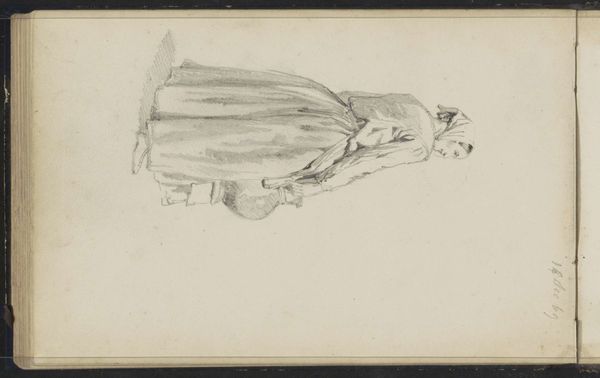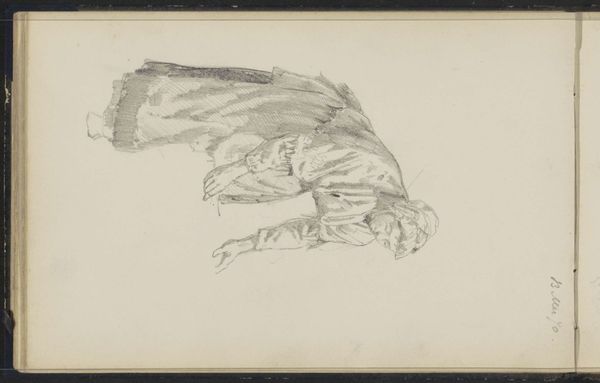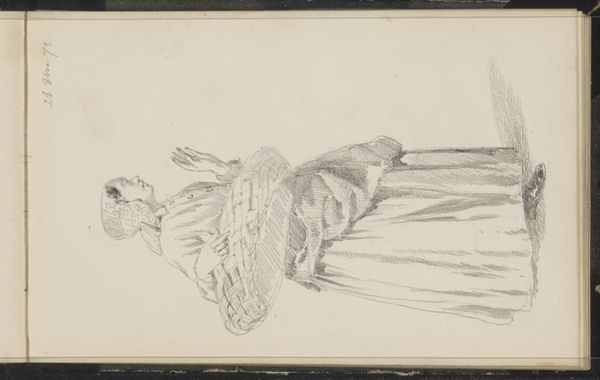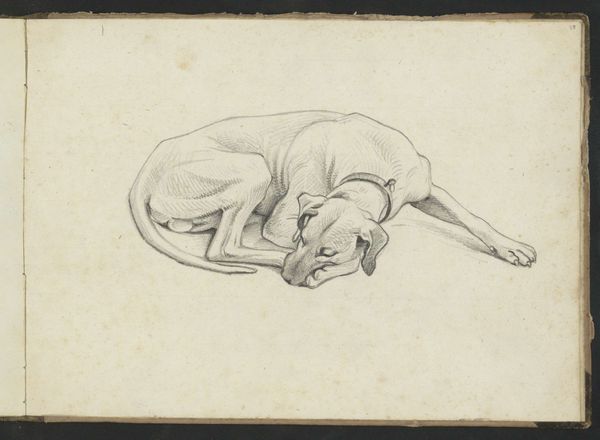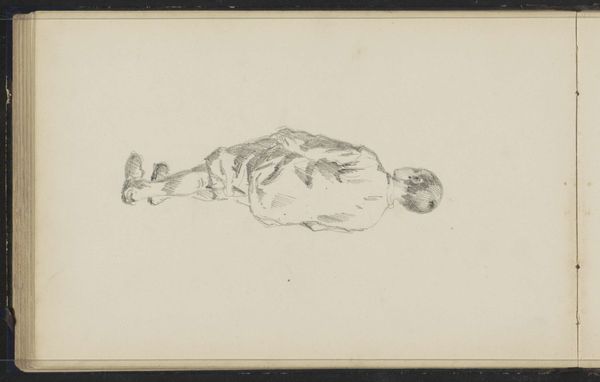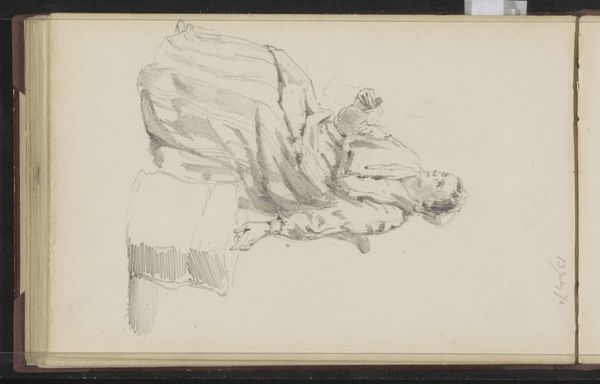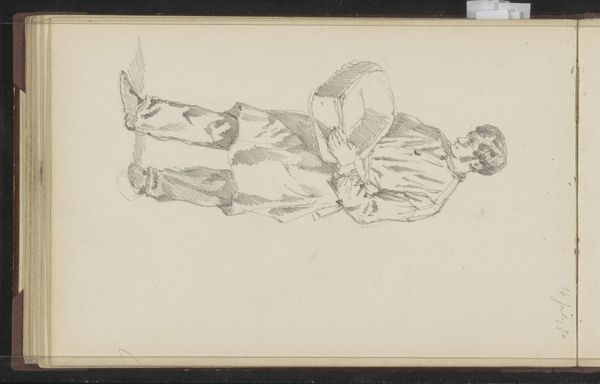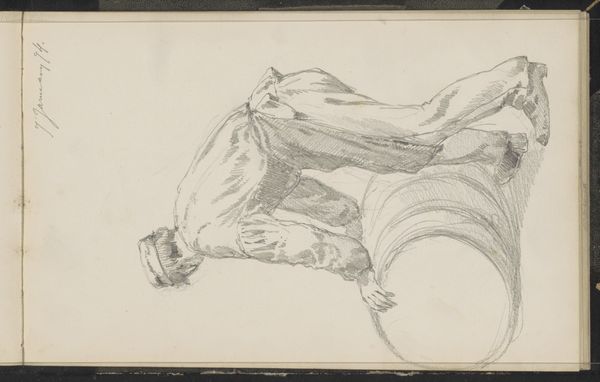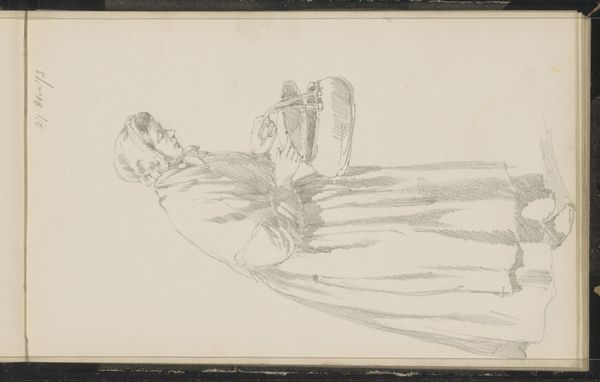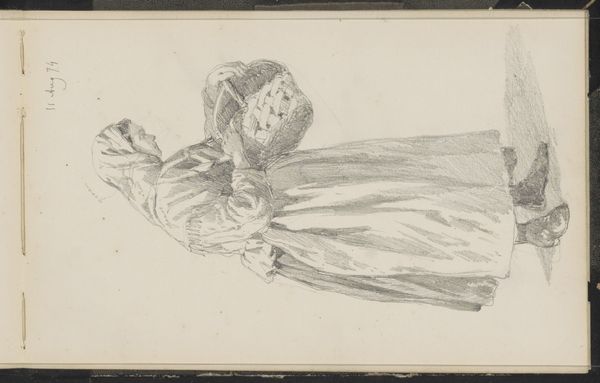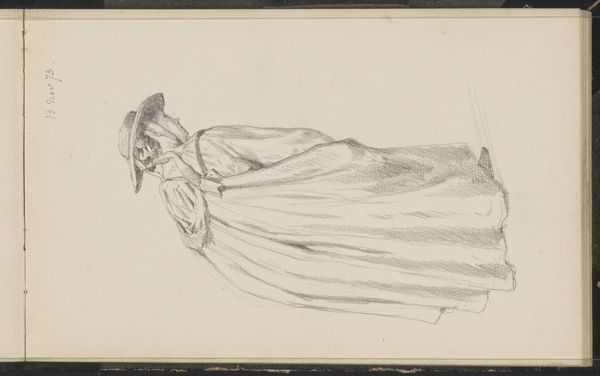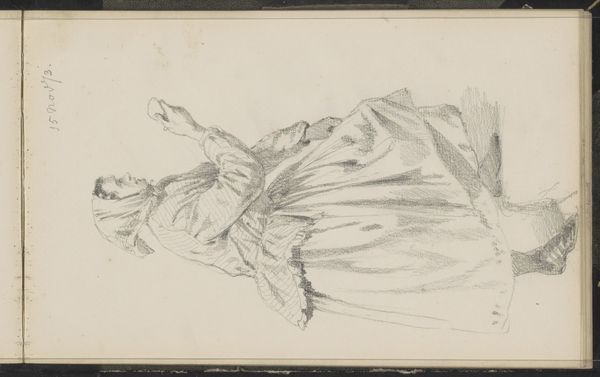
#
amateur sketch
#
toned paper
#
light pencil work
#
pencil sketch
#
incomplete sketchy
#
personal sketchbook
#
sketchbook drawing
#
watercolour illustration
#
sketchbook art
#
watercolor
Copyright: Rijks Museum: Open Domain
Editor: So, here we have "Zittende vrouw," or "Seated Woman," a pencil and watercolor sketch by Cornelis Springer, likely from around 1871-1872. It's a simple study, really, capturing a woman seated, possibly reading or working on something, with this incredibly delicate, almost ephemeral quality. How do you interpret this work? Curator: It's crucial to remember that Springer was primarily known for his architectural paintings. Therefore, this intimate glimpse into a more private sphere feels radical, almost subversive. Who was this woman? Was she a member of his household? The casual nature of the sketch implies a certain level of intimacy and comfort, which is intriguing when viewed through the lens of gender and class dynamics of the late 19th century. What does her posture tell us about the societal expectations placed upon women at the time? Editor: That’s a fascinating point. I hadn’t considered the societal constraints. It seems, despite being a quick sketch, it does hint at a narrative, maybe one of domesticity versus individuality? Curator: Precisely. We must ask ourselves, how does this portrayal either reinforce or challenge the prevailing ideologies of the period? The incomplete nature of the sketch further fuels this sense of in-betweenness, existing somewhere between public expectation and private life. What's her story, and is it being told? Editor: So, it's not just a sketch of a woman, but almost a document reflecting a specific historical and social moment. The “incomplete” or "amateur" qualities can be viewed as a potential strength within this social context. It's amazing how a simple drawing can open up such complex lines of inquiry. Thank you! Curator: Exactly. By situating it within its historical context, we can start to unravel some very compelling threads. It underscores how even seemingly simple works can reveal layers of meaning when viewed through an intersectional lens. It has certainly been illuminating.
Comments
No comments
Be the first to comment and join the conversation on the ultimate creative platform.
